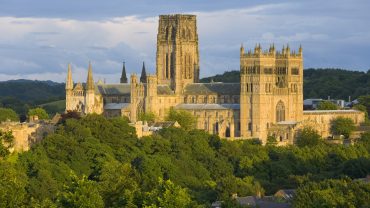Yorkshire is a county that bursts with history and character, where sweeping dales and rugged moorlands provide the perfect backdrop for some of England’s most stunning stately homes. Yet these historic houses in Yorkshire aren’t just landmarks, they’re living pieces of the county’s history, showcasing architecture and stories that have shaped the land of the white rose for centuries.
From grand Jacobean halls to elegant Georgian estates, the stately homes in Yorkshire reveal a fascinating tale of aristocratic ambition, artistic flair, and local tradition. Many remain in the hands of the families that built them, while others welcome visitors who want to take a fascinating step back in time. Each one echoes stories of lavish celebrations, political power plays, and royal intrigue.
Today, the stately homes of Yorkshire offer more than just a slice of history – they’re remarkable places to visit, often filled with impressive art collections, beautiful gardens, and atmospheres that capture the uniqueness of the region. From towering turrets to tiny tea rooms, we’re throwing open the doors to Yorkshire’s grandest houses.
Castle Howard

Castle Howard, Yorkshire (Credit: Jeremy Horner via Getty Images)
One of the most grandiose stately homes in North Yorkshire, Castle Howard, in the civil parish of Henderskelfe around fifteen miles north of York’s historic city centre, is a staggering example of English Baroque architecture. Designed by Sir John Vanbrugh and built over more than a century from 1699, Castle Howard has been the ancestral home of the Howard family, the Earls of Carlisle, for more than three hundred years. The estate was enhanced through the centuries with contributions from architect Nicholas Hawksmoor. There are also more than 1,000 acres of stunning parkland, including the Walled Garden, Woodland Garden, lakes and waterways, and a number of beautifully ornate statues, temples and follies.
One of the most impressive historic houses to visit in Yorkshire, Castle Howard has welcomed a host of notable guests, from royalty such as Queen Victoria to literary figures and filmmakers, and famously served as the backdrop for the beloved TV series Brideshead Revisited.
Harewood House
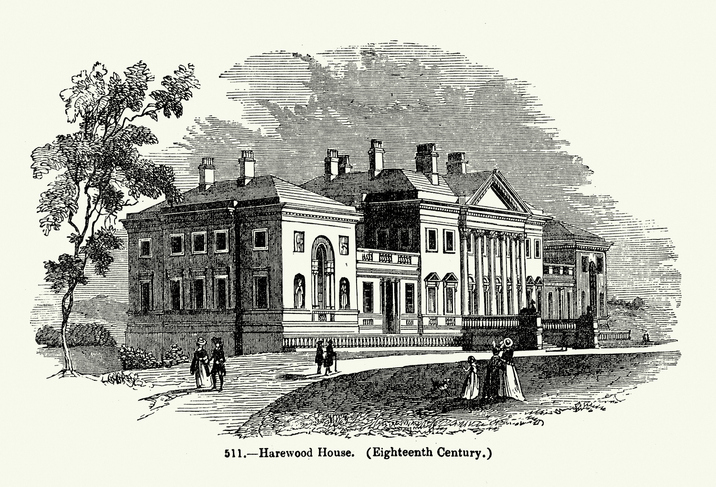
An 18th century illustration of Harewood House (Credit: duncan1890 via Getty Images)
Around nine miles north of Leeds city centre, Harewood House is a glorious example of eighteenth century Georgian architecture set within stunning landscaped grounds designed by Lancelot ‘Capability’ Brown, and later William Sawrey Gilpin. One of the most remarkable stately homes in Yorkshire, it was designed by the celebrated architects John Carr and Robert Adam and built between 1759 and 1771. Over the centuries, Harewood has remained the family home of the Lascelles family, who hold the title of Earls of Harewood.
Harewood House boasts one of the finest art collections in Yorkshire – and indeed the British Isles – with masterpieces by El Greco, Titian, Tintoretto, and Reynolds among its treasures. The house also features exceptional French and Oriental porcelain and a world-class collection of Chippendale furniture, created through Thomas Chippendale’s commission for Harewood.
Today, Harewood House is the home of David Lascelles, the 8th Earl of Harewood, and is admired not only for its sumptuous interiors, but also for its beautifully maintained grounds, including a stunning Himalayan garden. One of the best stately homes to visit in Yorkshire, it offers an engaging glimpse into Yorkshire’s rich history.
Ripley Castle

Ripley Castle in Yorkshire (Credit: Jean-Jacques MASSOU via Getty Images)
Not many stately homes in North Yorkshire can boast a seven hundred year history so packed full of, according to their own website, ‘political, military, religious and social turbulence, plague and persecution, and Renaissance, Enlightenment and industrial revolution, as well as tales of romance, courage, loyalty and recklessness.’
A stone’s throw north of Harrogate, Ripley Castle has been the ancestral home of the Ingilby family since the fourteenth century and combines medieval, Tudor, and Georgian architecture. The gardens and parkland add to its timeless appeal, offering visitors a glimpse into centuries of English country living.
The estate was first acquired by Sir Thomas Ingilby around 1308 through his marriage to Edeline Thwenge, inheriting the manor and medieval house. The castle as seen today features a tower built between 1548 and 1555, with later significant rebuilding around the 1780s in Gothic Revival style.
The house really does have stories to tell. In 1603 Sir William Ingilby was knighted there by King James VI of Scotland as he made his way to London to be crowned King James I of England. Two years later William was allegedly involved in the Gunpowder Plot and let members of the gang stay at Ripley while they bought horses. Later in the seventeenth century, his nephew, also called William, fought as a Royalist during the English Civil War and hid in a priest hole while Parliamentarian leader Oliver Cromwell stayed there for a night. The castle is also said to be haunted by Dame Alicia Ingilby who died of meningitis in the castle in the 1870s.
Today, Ripley Castle is one of the most fascinating historic houses in Yorkshire and remains a jewel in the crown of the county’s amazing history.
Bramham Park

Bramham Park, home of the Leeds Festival (Credit: Jupiterimages via Getty Images)
Music lovers will know Bramham Park as the home of the annual Leeds Festival, and history lovers will know it as one of the best stately homes to visit in Yorkshire. Situated just south of Wetherby in West Yorkshire, Bramham is a stunning eighteenth century country house known for its grand Baroque style and five hundred acres of landscaped parkland including avenues, ornamental lakes, and a number of Grade I-listed structures.
The house was built around 1698 for Robert Benson, 1st Baron Bingley, after he returned from a Grand Tour, and interestingly (and highly unusual) for a house of this size and importance, the architect is unknown. Names that have been linked include James Gibbs, Thomas Archer, James Paine, William Talman and Giacomo Leoni, but so far, no evidence has been unearthed to know for sure.
The estate passed by Robert Benson to his daughter Harriet and her husband George Fox-Lane, who continued to develop the estate with features like the Gothic Temple and the obelisk memorial. The gardens remain an exquisite example of early eighteenth century formal design, and after being passed through generations of the family, the house suffered a devastating fire in 1828 and remained a ruin until restoration work began in the early twentieth century.
Today, Bramham Park is one of the most fascinating historic houses in Yorkshire and is celebrated not only for its impressive architecture and historic interiors but also for its beautifully preserved gardens and parkland.
Temple Newsam
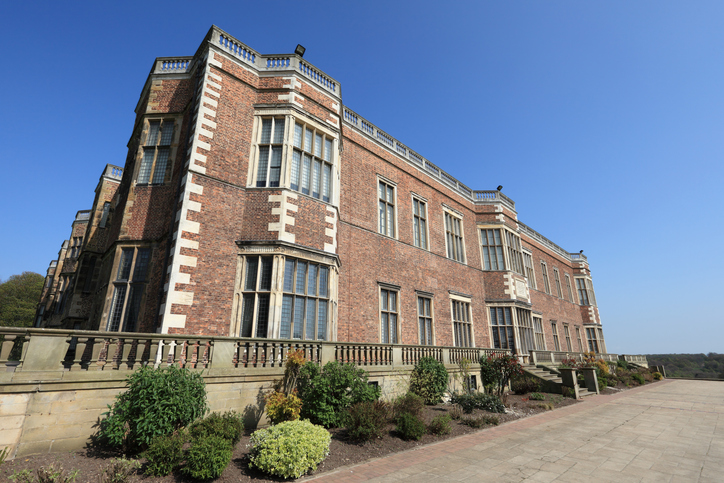
Temple Newsam, named after the Knights Templar (Credit: kelvinjay via Getty Images)
Temple Newsam, a magnificent Tudor-Jacobean mansion near Leeds, is steeped in nearly 1,000 years of history. One of the most historically significant stately homes to visit in Yorkshire, the estate’s name stems from its early association with the Knights Templar, who farmed the land in the twelfth century. The estate had a number of owners between the time the Templars were suppressed in the early fourteenth century and the late fifteenth century, and the grand house itself was built between 1500 and 1520 by Thomas Darcy, 1st Baron Darcy de Darcy, who inherited it from his ancestors.
After Darcy was executed for high treason in 1537, the house was seized by the Crown and King Henry VIII gifted it to his niece and her husband. Their son, Henry Stuart, Lord Darnley, then married Mary, Queen of Scots, the parents of King James VI of Scotland and I of England. It was seized again in 1565 by Queen Elizabeth I, and when she died, her successor, King James I, granted it to a cousin. Talk about a tale of royal intrigue!
In the seventeenth century, Temple Newsam underwent significant rebuilding and enhancements, including the acclaimed landscaping of Capability Brown in the 1760s, who designed its famous ponds, bridges, and gardens. The estate is rich with Tudor and Jacobean architectural features, alongside elegant later Georgian additions, showcasing centuries of aristocratic life and style.
Today, the entire estate is owned by Leeds City Council and is also home to the largest working rare breeds farm in Europe!
East Riddlesden Hall
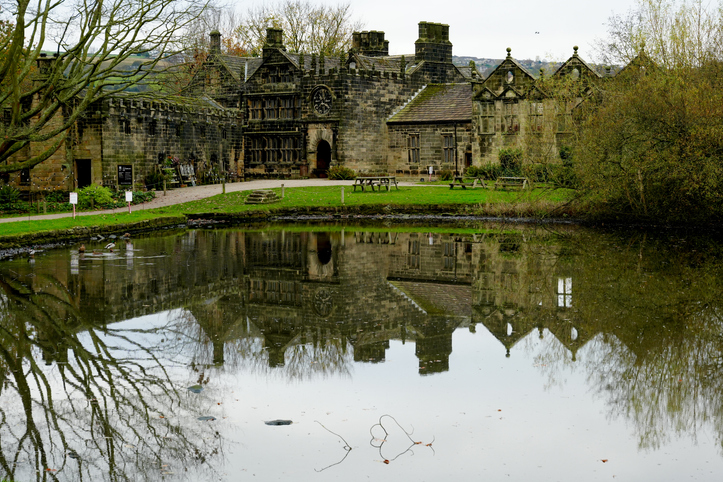
East Riddlesden Hall, near Keighley in Yorkshire (Credit: Brian Holgate via Getty Images)
East Riddlesden Hall, a charming seventeenth century manor house near Keighley, was built in 1642 by James Murgatroyd, a wealthy cloth merchant from Halifax. Set on a small plateau overlooking a bend in the River Aire, the hall is built from local Yorkshire stone and features distinctive architectural details such as two Yorkshire Rose windows and a walled garden. One of the most interesting historic houses in Yorkshire, the building was extended and rebuilt by James and his wife Hannah in 1648, showcasing their royalist sympathies with carved stonework depicting King Charles I of England and his wife Henrietta Maria of France which today take pride of place in the tea room and shop!
The estate boasts a fascinating history, with the Murgatroyd family reputedly inspiring characters in the comic opera Ruddigore by Gilbert and Sullivan, the former was said to be a frequent visitor. The hall’s past is filled with tales of colourful behaviour, legends of ghosts, and even the curious story of the River Aire changing course to avoid the property and its wild parties. Despite its relatively modest size compared to grander stately homes in Yorkshire, East Riddlesden Hall offers an intimate glimpse into seventeenth century life.
Treasurer’s House
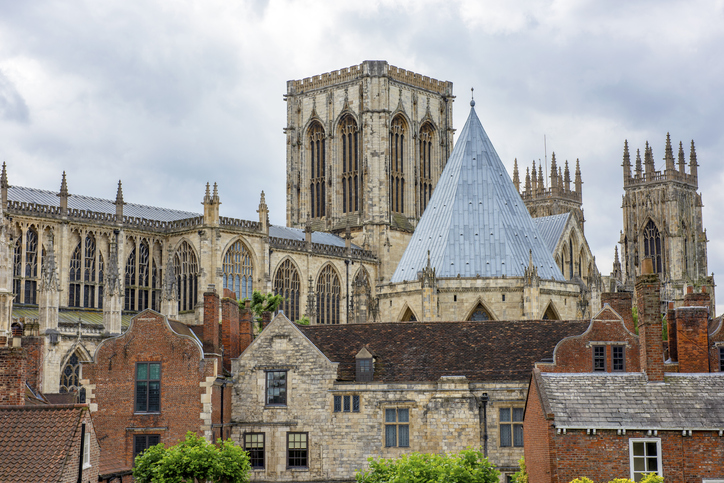
Treasurer's House in the shadow of York Minster (Credit: steve-goacher via Getty Images)
Treasurer’s House, in the shadow of York Minster, is a Grade I-listed townhouse owned by the National Trust, boasting an extraordinary history dating back to the years immediately following the Norman invasion. The site was originally home to the Treasurer of York Minster, first appointed in 1091, who was responsible for managing the church’s finances. While very little of the original building has survived, much of the current house was built in the late sixteenth and early seventeenth century and it has become one of the most fascinating historic houses to visit in Yorkshire.
The Reformation in 1547 brought the job of Treasurer to an end, and Treasurer’s House was subsequently sold to Robert Holgate, the Archbishop of York between 1545 and 1554, and then to Archbishop Thomas Young (1561 – 1568). It was the Young family who built the current house and in 1617, King James I visited during a visit to York.
The house has since passed through a number of private owners, including Lord Fairfax, and was eventually sub-divided into individual tenements. It fell into disrepair by the nineteenth century until industrialist Frank Green bought the separate plots and meticulously restored the house back to its deserved grandeur between 1897 and 1900, preserving historical interiors and adding fine architectural details that blend Tudor, Jacobean, and Victorian influences.
Prince Albert Edward, later King Edward VII, his wife Princess Alexandra of Denmark, and their daughter Princess Victoria visited the Treasurer’s House in 1900, and in 1930 Frank Green retired and gave the house and its contents to the National Trust. It’s believed this was the first time a private house and everything inside it was given to the Trust.
One of the most peculiarly wonderful stately homes in Yorkshire, the Treasurer’s House even comes complete with stories of Roman ghosts, lavish celebrity parties and a promise by its former owner to haunt the building if anything changed after he died.


